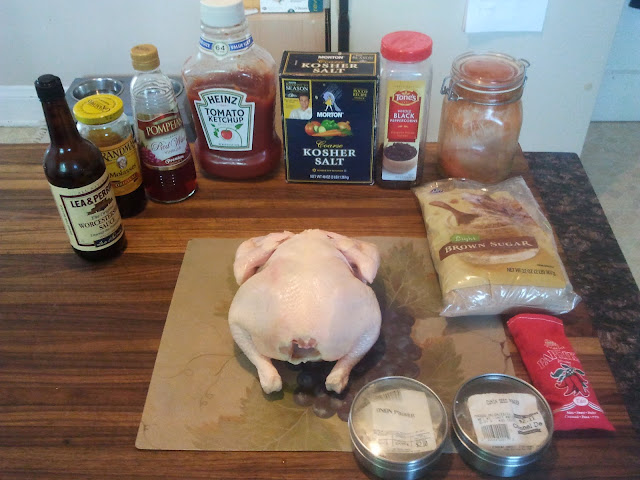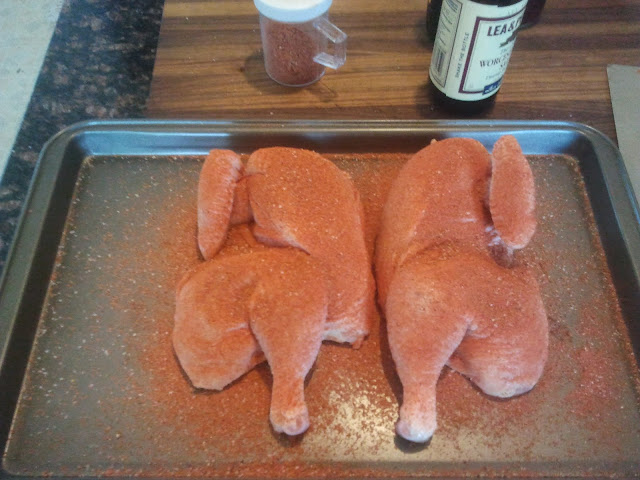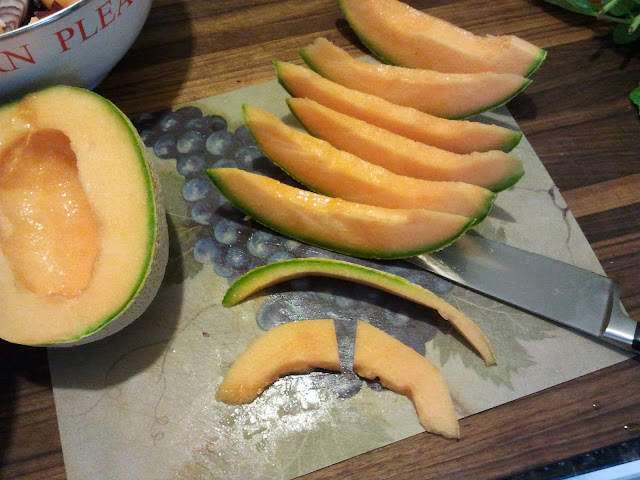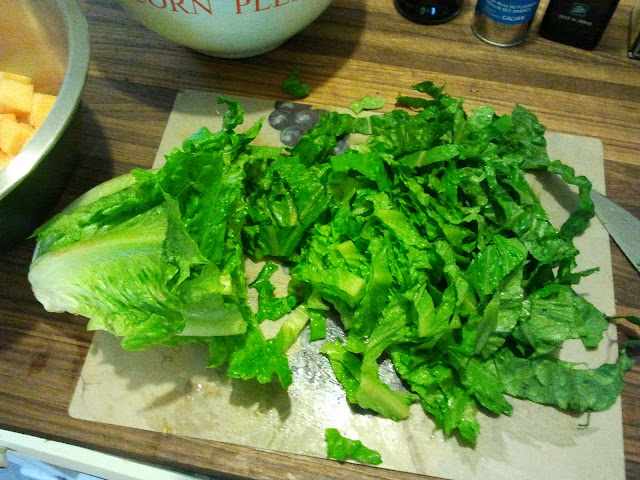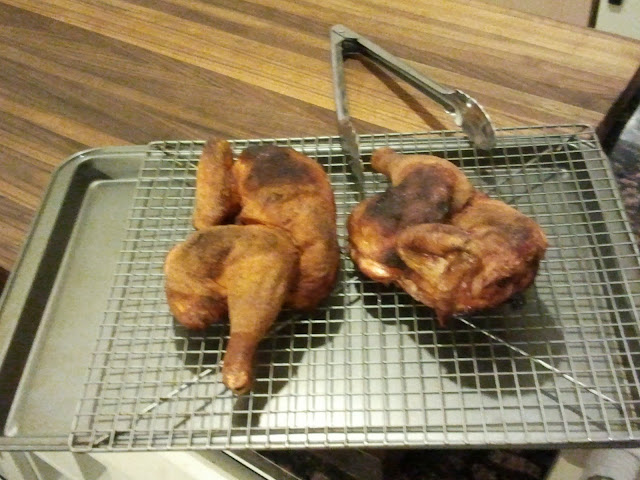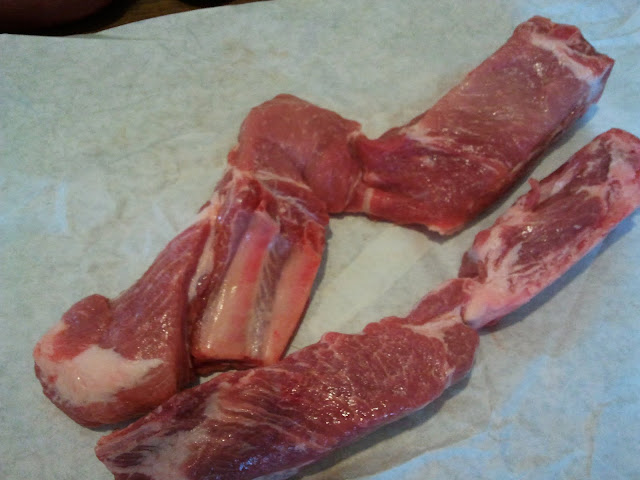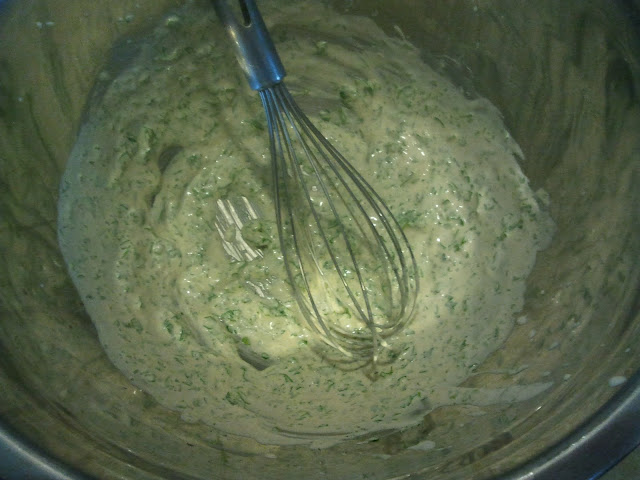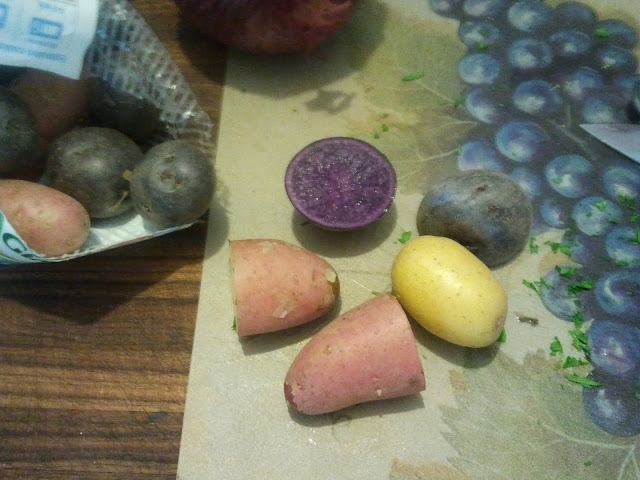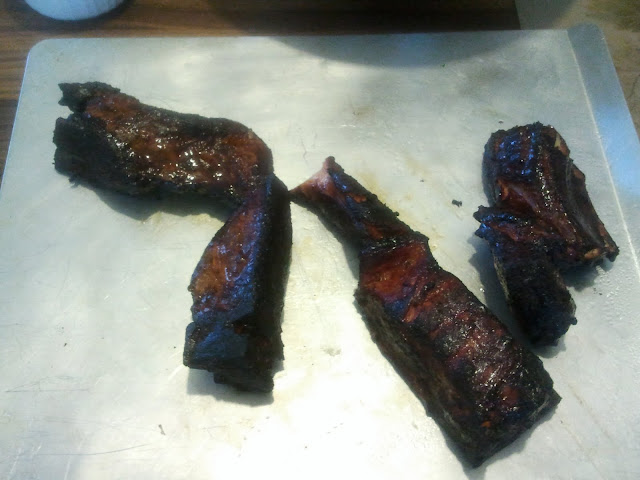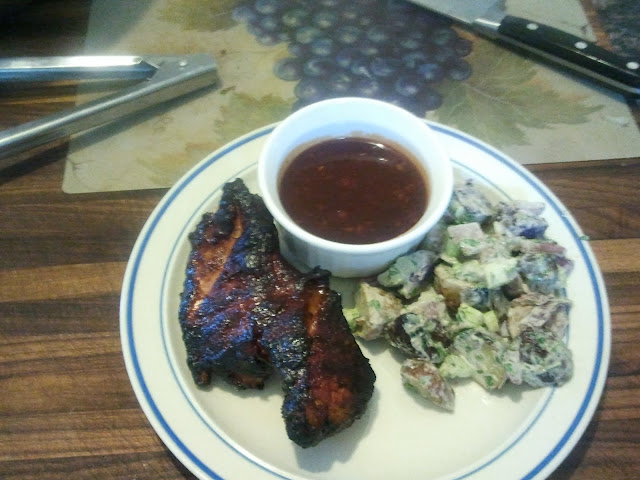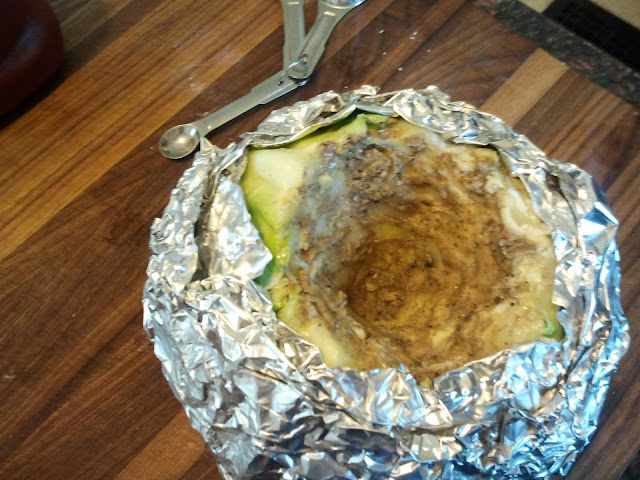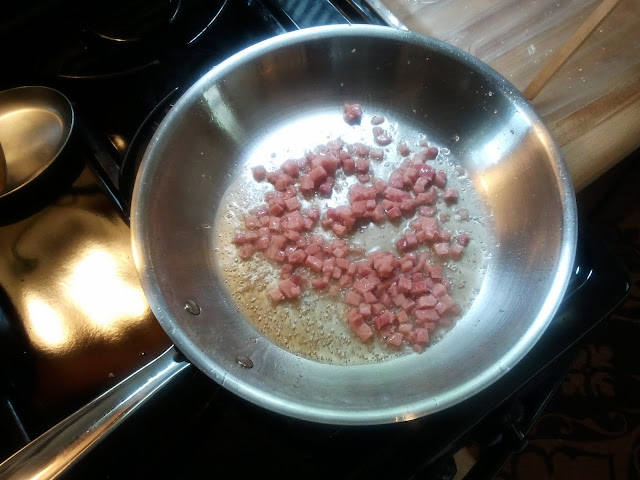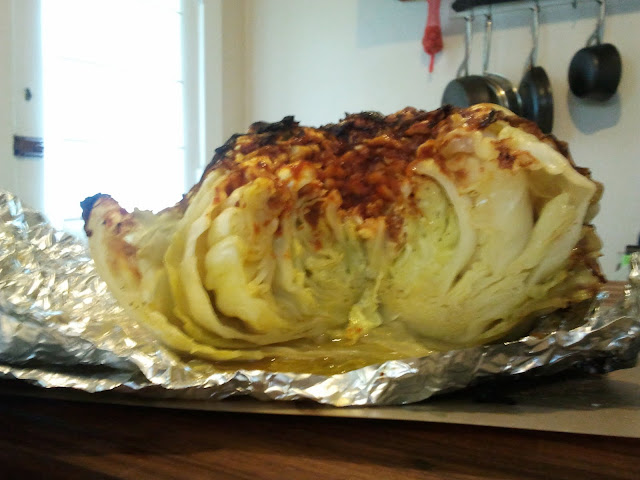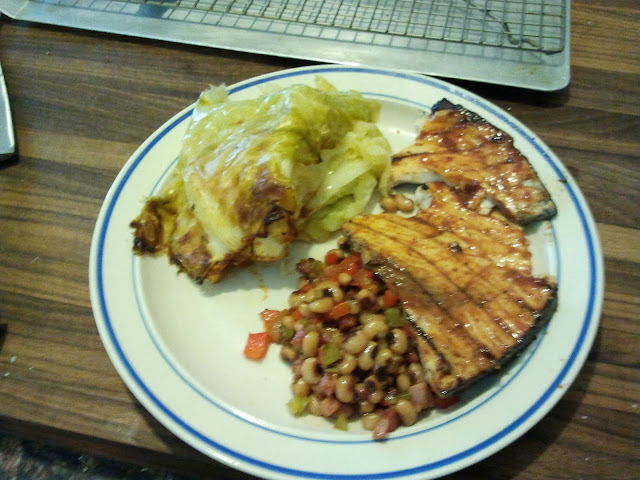For the first week and a half, The Bride was able to read this trifle while staying in China. Two days ago, the Chinese government decided to block A Guy and His Grill. Wow. I'm now a banned author in China. I still can't wrap my head around that.
Today was another day where I wasn't going to be home until late, and so I needed a no-hassle recipe. The Grilled Salmon With Summer Salad on page 295 seemed to be appropriate. I actually stopped by the fishmonger before work and noticed that there was a new type of salmon that they were carrying, something like Alaskan King River Salmon. I decided to be adventurous.
The first step, while waiting for the water to boil (more on that later), was to make the dressing.
I got to learn a new technique! To be perfectly honest, I fully anticipated having to prepare the corn in the same manner in which I have done in the past...soak, peel back husks, de-string, put back husks, tie off, and grill. I didn't even bother to read the recipe this morning as I made my grocery list. I even got out the skewers, thinking that I was going to have to gill the tomatoes as well. When I came home and started to gather the necessary materials, I looked for those steps and was surprised to see that I was going to do something different. The concept behind this meal is to be al fresco and thus very "fresh" instead of grilled. To make the corn, you have to first boil a large pot of water.
When you have achieved a rolling boil, add the cobs.
Cover.
Immediately TURN OFF THE HEAT!
Set your timer for four minutes.
Remove to drain and cool. The kernels will be just barely tender...adding to the whole al fresco atmosphere.
When cooled, liberate the kernels from the cob.
I went against the grain for what Weber would have me do. I recently discussed my opinion on the two ways that Weber grill salmon, and I opted for the complete indirect method. It preserves the salmon in one easy and manageable piece, but lacks the pretty grill marks. In regards to the missing grill marks, I find myself already over it. The salmon came off the grill in one beautiful piece without me ever risking it falling apart. This salmon turns a pale pink when complete.
You don't cook the tomatoes at all. Add everything together for the salad and mix gently. From here you are supposed to cover the salmon with the salad and serve. I didn't like that. I thought it would look prettier if the salmon was on top, so I went against Weber again.
Once again, this recipe was a big success, especially in regards to how easy and low maintenance it is. Let's face it, you boil and cut some corn, cut some tomatoes and basil, make a simple dressing, and grill salmon for ten minutes. It's super easy! As for the taste...YES! It was truly "fresh" (two meals in a row I've used that theme) and delightful. The salmon only needed the salt and pepper, and would have stood well on its own. When put on the same fork as the salad it simply sung. The corn was indeed tender, the fresh basil from my garden was in the background lending its support, and the tomatoes were in the perfect quantity to be noticed but not drive the salad. The dressing was bright, flavorful, and also in a perfect ratio to the salad. In all, this recipe uses just a handful of ingredients, is super simple to cook, won't make a mess in your kitchen, and is a nice change of pace on a hot summer day. Too bad no one in China will learn how awesome I think this is.











